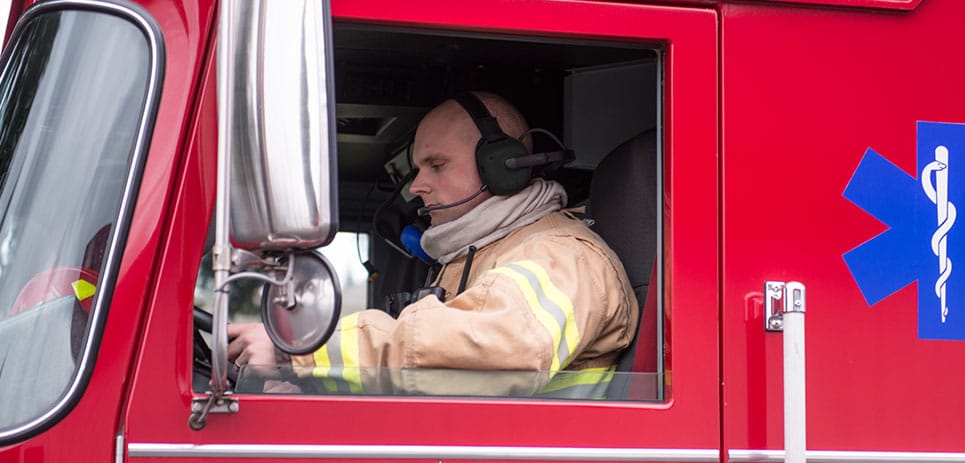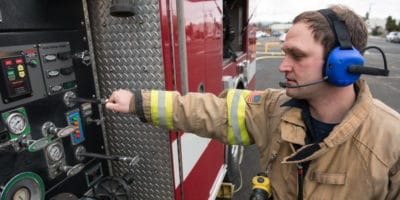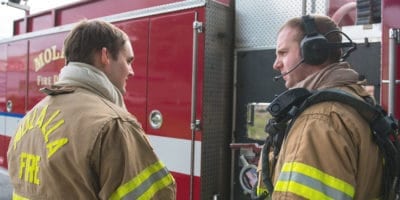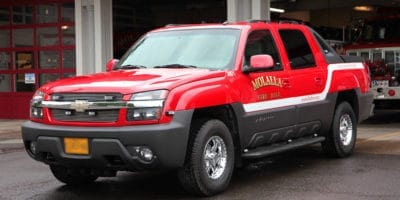Cutting Out the Noise: Protecting Firefighter Hearing

Edited: March 29, 2018
By 2060, it’s expected that the number of adults with hearing loss will have doubled to nearly 22%. Firefighters are no exception to this statistic. As PPE advances in other areas, hearing conservation has some catching up to do. Industry experts suspect one reason for slow adoption of hearing protection may be the fear that firefighters wearing it won’t be able to hear commands. Failure to respond to voice commands, alarms, or other low-intensity sounds could put a firefighter at serious risk for injury, or even death.
The cost of noise exposure
But these job functions come at a cost. A group of doctors studied 192 firefighters to find that hearing loss among the group was 150% higher than same-aged individuals working in “non-noise exposed” environments. The firefighting career has many potential exposures to dangerously high decibel levels. The average decibel level of a fire scene starts at 80dBA, but it jumps to 95dBA on a return run from a scene. A decibel level of 80dBA can cause inner-ear damage and risk hearing loss in prolonged exposure.
The enemy is us
Firefighters confirm this fact. Lieutenant Paul Costello vividly remembers his evolution from a freshly minted probie dismissing his older colleagues’ complaints, to his current role as an experienced officer with his own hearing impairments from more than 23 years in the profession. He uses an old adage when describing challenges the fire industry faces in implementing better hearing protection. “I’ve seen the enemy, and it is us,” says Costello. Working as a union president he recalls focusing on low-bid hearing protection to muffle radio noise from dispatch. Unfortunately, such low-cost measures did nothing to address the siren or horn noise in the apparatus. With so much potential risk for firefighters, how can the industry protect against the possibility of hearing loss or damage?
Noise protection strategy
Depending on the environment, firefighters can wear earplugs at a minimum. In-ear speakers for communication are a good option, and wearing earmuff-type devices can provide additional protection. Engineers who operate next to noisy pump panels should wear a headset with a noise-cancelling mic that connects to the vehicle’s intercom system.5 These are short-term, immediate strategies. For long-term protection, fire departments must consider the investments necessary to prevent hearing loss.
Firecom produces a variety of products that are optimally designed to protect firefighter hearing on the job. The FHW507 is a radio transmit wireless headset. Not only does the headset have DECT7® wireless intercom, Bluetooth capability and durability in cold weather temps, it provides a 24dB noise reduction rating (NRR). Having proper equipment like communication headsets is important because of the repeated and prolonged noise exposure faced by firefighters both in the apparatus and on scene. Failing to make investments now can result in permanent hearing damage and costly compensation claims down the road.
Costello admits he now has issues hearing some frequencies and vectors. He shudders to remember the “un-best practices” he saw occurring early in his career and now recognizes the significance of a disability claim that will likely continue on far past retirement. “Much less expensive is the training and supervisory enforcement to ensure compliance. It is, literally, for our own good,” says Costello.


